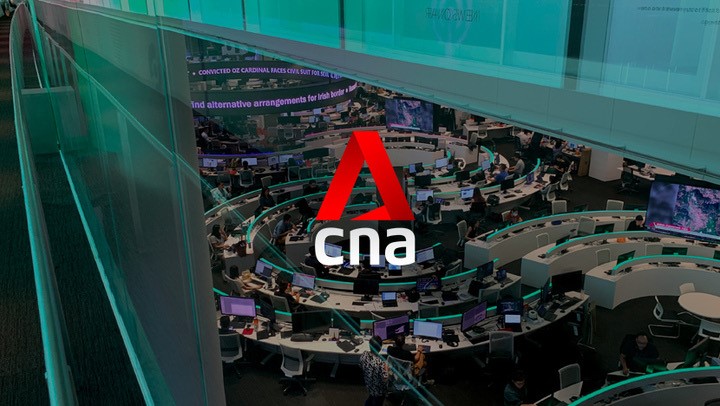DUBLIN: With his successful voyage to the edge of space, British billionaire Sir Richard Branson and his business Virgin Galactic have firmly established themselves as space tourism pioneers. While Branson is not the first person to travel to space, he is the first to do so with a commercial spaceflight business, marking a significant step forward for the space tourism industry championed by some of the world’s most well-known billionaires.
Virgin Galactic, unlike its competitors, launched their spaceship from a carrier craft rather than from the ground.
Branson, three Virgin Galactic mission specialists, and two pilots traveled on the company’s SpaceShipTwo vehicle “VSS Unity,” which was lifted to an altitude of 50,000 feet by a WhiteKnightTwo aircraft before being launched from the carrier craft.
After a brief weather delay, the mothership plane, dubbed VMS EVE (after Branson’s late mother), took off on July 11 in the afternoon.
VSS Unity then launched its own rocket, which propelled it to a height of more than 50 miles above Earth.
Before reentering the earth’s atmosphere and landing at the company’s spaceport America base in New Mexico, the four passengers experienced weightlessness and viewed the curvature of the planet’s surface.
THE SUCCESS OF VIRGIN GALACTIC
Despite the fact that SpaceShipTwo did not reach the Kármán line, which is 62 miles above Earth and is commonly regarded as the boundary of space, the Federal Aviation Administration places the dividing line at 50 miles.
READ: Commentary: Is Space Travel Possible? Why is Virgin Galactic at the head of the pack?
The success of Virgin Galactic did not happen suddenly. The company, which was founded in 2004 with the goal of providing paying customers with a trip into suborbital space, has had many false dawns over the years, with anticipated flight dates being unduly hopeful and a significant setback involving a deadly accident in 2014. In recent years, the business has made significant progress, accomplishing its first suborbital flight in December 2018. In October of this year, Virgin Galactic became the first commercial spaceflight business to go public. While the stock has been erratic in the meanwhile, it has risen by approximately 50% since receiving approval from the US Federal Aviation Administration to begin passenger flights last month.
A still image from an undated handout video recorded at Spaceport America near Truth or Consequences, New Mexico, shows Virgin Galactic’s passenger rocket plane, the VSS Unity, in its hanger. REUTERS/Virgin Galactic/Handout
With an eye on the record books, Virgin Galactic stated immediately that Branson’s launch aboard SpaceShipTwo would be delayed by nine days, putting him nine days ahead of rival billionaire Jeff Bezos’ scheduled trip into space.
Early next year, Virgin Galactic hopes to begin commercial space tourism flights. This is good news for the 600 ambitious space tourists who have been waiting years since making their reservations in the late 1990s at a reported price of US$250,000. In anticipation of growing passenger demand, the business wants to manufacture dozens of spacecraft. READ: Elon Musk takes a big risk with bitcoin to keep Tesla afloat BILLIONAIRES TAKE TO THE SKY Branson has surpassed his fellow billionaires, Amazon founder Jeff Bezos, SpaceX and Tesla’s Elon Musk, in the first round of the space tourism race, and has achieved a significant marketing coup. Both Bezos and Musk, on the other hand, have big ideas for space tourism, with the latter’s aspirations stretching to the moon and even Mars. On July 20, 52 years after the first lunar landing, Bezos will launch into space atop his company Blue Origin’s New Shepard rocket. Bezos will be joined by his brother Mark, American aviator Wally Funk, a fourth passenger who won the auction for the last seat with a winning offer of US$28 million, and a fourth passenger who was part of a failed effort to take women into space in the 1960s. Beyond the initial flights with their rich founders, Virgin Galactic and Blue Origin will compete for paying consumers to fly into space.
Elon Musk, the founder of SpaceX, and Jeff Bezos, the founder of Amazon. MANDEL NGAN/AFP/Brendan Smialowski
The two businesses will also profit from sending scientists and researchers into space. This will be significantly less expensive than sending experiments and people to the International Space Station, which is a much more complex task. Musk’s SpaceX wants to launch four passengers into a three-day orbit around the planet in a Crew Dragon capsule at an altitude of 335 miles later this year. With the rise of space tourism and, more broadly, the space economy, Bezos, Branson, and Musk can no longer be dismissed as well-heeled tycoons. They have infused the space sector with a fresh sense of adventure, entrepreneurial enthusiasm, and intensity. They have made significant progress in advancing the frontier of space and space tourism as a result of their efforts. They have produced cost savings, for example, by implementing circular economy ideas in a novel way. For example, SpaceX’s adoption of reusable rockets has resulted in significant cost savings. These flights, crucially, have served as an inspiration to others. The space business is now attracting private money, and it is expected to nearly triple in size by 2040, reaching a value of $1 trillion. While there may be a winner in the first round of the new space race, there are still many more rounds to go. There will be setbacks as well as accomplishments, given the high-risk nature of space flight and space in general. Even while the stakes are high, the potential benefits are enormous. The successful flight of Sir Richard Branson marks a watershed event in the commercialisation of space. Professor of Business Studies at Trinity College Dublin, Louis Brennan This piece was originally published in The Conversation./n


